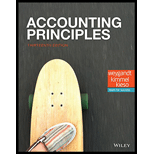
Concept explainers
a.
Job order costing:
Job order costing is a cost evaluation method that considers each job separate and assigns costs to them. It is mostly applicable in the service industry wherein every job has a separate requirement.
To prove: Agreement of Work in Process and calculate other factors.
b.
Job order costing:
Job order costing is a cost evaluation method that considers each job separate and assigns costs to them. It is mostly applicable in the service industry wherein every job has a separate requirement.
To prepare: The
c.
Job order costing:
Job order costing is a cost evaluation method that considers each job separate and assigns costs to them. It is mostly applicable in the service industry wherein every job has a separate requirement.
To compute: Gross profit for the period.
Want to see the full answer?
Check out a sample textbook solution
Chapter 20 Solutions
EBK ACCOUNTING PRINCIPLES
 Principles of Cost AccountingAccountingISBN:9781305087408Author:Edward J. Vanderbeck, Maria R. MitchellPublisher:Cengage LearningPrinciples of Accounting Volume 2AccountingISBN:9781947172609Author:OpenStaxPublisher:OpenStax College
Principles of Cost AccountingAccountingISBN:9781305087408Author:Edward J. Vanderbeck, Maria R. MitchellPublisher:Cengage LearningPrinciples of Accounting Volume 2AccountingISBN:9781947172609Author:OpenStaxPublisher:OpenStax College Managerial AccountingAccountingISBN:9781337912020Author:Carl Warren, Ph.d. Cma William B. TaylerPublisher:South-Western College Pub
Managerial AccountingAccountingISBN:9781337912020Author:Carl Warren, Ph.d. Cma William B. TaylerPublisher:South-Western College Pub Cornerstones of Cost Management (Cornerstones Ser...AccountingISBN:9781305970663Author:Don R. Hansen, Maryanne M. MowenPublisher:Cengage Learning
Cornerstones of Cost Management (Cornerstones Ser...AccountingISBN:9781305970663Author:Don R. Hansen, Maryanne M. MowenPublisher:Cengage Learning College Accounting, Chapters 1-27AccountingISBN:9781337794756Author:HEINTZ, James A.Publisher:Cengage Learning,
College Accounting, Chapters 1-27AccountingISBN:9781337794756Author:HEINTZ, James A.Publisher:Cengage Learning,




